Best Trails and Destinations for Hiking in Vietnam
Hiking is the activity of going for long walks in the countryside. Most hikers are loyal to the existing trails and rarely move into places with unclear terrain. When it comes to Vietnam, you will come up with the unique cuisine, long-lasting history and cultural customs. Now, you can also go for some pretty awesome hikes in Vietnam. Hiking in Vietnam spans the entire hiking spectrum, from easy walks through historic villages and on scenic beaches to serious, long-distance jungle treks. Therefore, this article will provide you with the best trails and destinations for hiking in Vietnam on your Vietnam tour.
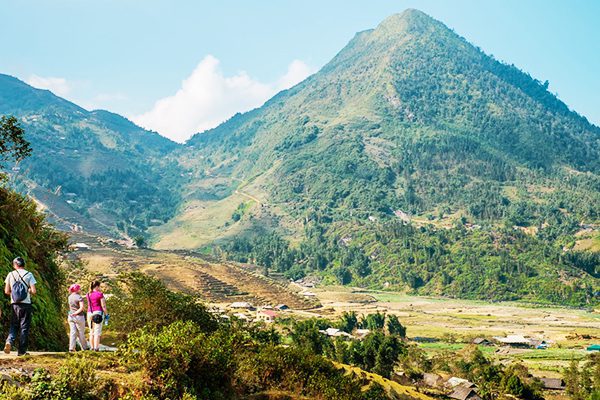
Hiking in Vietnam
Tips for Hiking in Vietnam
1. Find your partners
If you know your friends like hiking, ask them to bring you along. Most people are happy to share their expertise, allowing you to borrow equipment and introduce new people to their favorite paths.
If you don’t know any people, many cities and towns have hiking clubs that regularly plan hiking. You can find classes on hiking, tour hiking and events via the Internet.
Your partners will also be there to help if you are injured. If traveling alone is really your only option, then start with short trips to famous places and make sure your relatives or friends always know where you are going and how long you plan to go.
2. Choose suitable hiking destinations
The guidebook and website are great resources because you can find all the statistics you need: trail difficulty, distance, altitude, driving directions, water sources, features trail and whether you can lead your pet along. Websites often display recent trip reports that can tell you the current trail conditions.
Word of mouth: If you have friends you like to walk, ask them to suggest some places for you.
Ask locals: contact a local hiking organization or call a ranger station in the area you want to walk. Rangers often know the current trail conditions and can recommend a few options to suit your hiking level.
3. Choose an appropriate walking route
– Time: Do you plan to go hiking for a few hours or all day? The amount of time you decide to go can make it easier to locate. Do not forget the important factor is how long it will take you to get to the venue and go home.
– Your physical heath: Honestly assess your fitness and fitness level. You want to have an enjoyable time out there instead of having to go through a long, arduous walk that you didn’t prepare. If you are not a physically fit person, do not be dismayed. Because there are always trips suitable for everyone.
– Range: Think about how many miles and hours you feel comfortable hiking. The average walking speed is about 3 miles per hour, but your walking speed may be slower depending on the terrain, altitude and weight you are carrying on your back.
– Height: The increased level of walking is a determining factor in difficulty. With a bit of experience, you will know the increase you can handle comfortably and which level is too much. For example, if a trail rises 1,000 feet in height in a mile, that is considered quite steep. Also, a general recommendation is that for every 1,000 feet of elevation increase, add an hour to your trip.
– Time of the year and weather: Some trails are difficult to walk in early spring because they are covered with snow. If the weather falls in the fall and the sun sets earlier, plan to not be surprised when it gets too dark. Always check the weather forecast before going out so you can dress and pack appropriately.
– Reasonable packaging: Some hiking trips require a little more planning. For example, if you plan to go on a different hiking trip, you will need to take the car to your starting and ending points.
Read more: Vietnam Travel Guide: Essential information, best time to travel
Essentials for Hiking in Vietnam
1. Hiking shoes
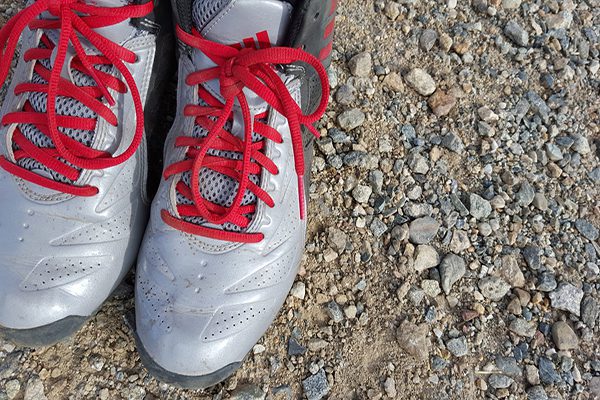
A pair of hiking shoes
Shoes are one of the most important items you need to choose, and this is also a personal option. Some pedestrians prefer ankle-high boots, while others prefer lightweight terrain running shoes. The terrain you will be walking may also affect your decision. Light, low-necked shoes can be good on roads that are not too rugged, without many obstacles. While the shoes can definitely serve you better on a dirt road, roots and streams.
Whichever type you choose, make sure your shoes or boots are properly printed and comfortable when you are walking a long distance. And wear wool socks or synthetic socks, don’t choose cotton socks.
2. Hiking clothes
Choose clothes made of quick-drying, damp-absorbing fabric, such as wool or polyester. Avoid cotton because it takes longer to dry when wet. Here are some tips for choosing:
– The lining is near the skin. Choose fabrics made of wool or polyester, these layers are most important when you go to cool to cold temperatures.
– Class hiking. These include nylon and / or polyester pants, a T-shirt, a sunscreen, a sun hat.
– Insulation. Depending on the weather, you may need a life jacket or a jacket, a light fleece sweater, a warm hat and gloves.
– Raincoat. It is a wise idea to bring a waterproof jacket regardless of the weather forecast. If you think the weather will be wet, bring rain pants with you.
3. Hiking backpack
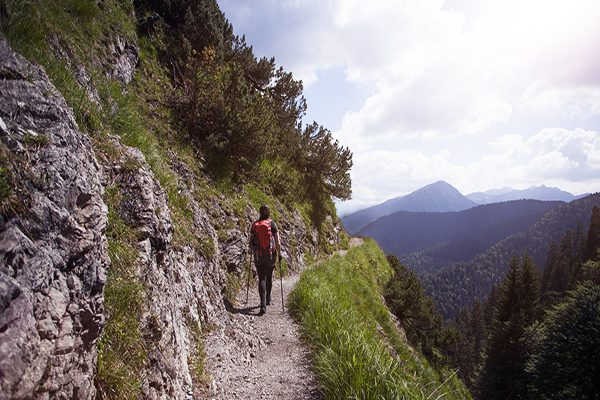
Carry all your things in a backpack and go!
Of course, you need a backpack to carry essential items and any additional equipment.
For short trips on roads close to home and on days with good weather, a backpack with a capacity of about 15 – 20 liters provides enough space for water, a few snacks and a class. light clothes.
When you venture into the wilderness, you will need to bring more furniture, clothes, water and food. A backpack of about 30 liters capacity is a good choice for all hiking journeys.
4. Food & Drinks
As a beginner, it can be difficult to know how much food and water you need. A general recommendation for how much is 200 – 300 calories per hour. As for the amount of water, about half a liter per hour works just right at just the right temperature. This level of eating depends a lot on a number of factors, such as walking intensity, weather, age, sweating ability and your type of body. As you gain more experience, you get a better sense of how much you need.
It is always a good idea to bring a little more food and water in case your trip takes longer than expected.
Water treatment: many pedestrians carry all the water they need for a day of walking. However, if you expect to need more than about 3 liters, that can be quite heavy. By filtering and treating water from streams and lakes, you can easily fill a water tank or water tank. It also helps reduce luggage weight.
5. Items for Personal health and Security
– First aid kit: You don’t need to be a medical professional to go hiking. But you also need to know some basic first aid methods. Always carry a first aid kit and know how to use it. The farther you go, the more important it is to know your health skills.
– Waste bags & dry hand wash: Most hikers usually arrange sanitation needs before they depart. But if that need occurs in the middle of a trip, take your waste disposal bag with you and dry hand wash to clean your hands.
– Personal locator beacons (PLB): If you are traveling alone or visiting very far locations, you might consider bringing PLB with you. It allows you to send an SOS message if something serious happens.
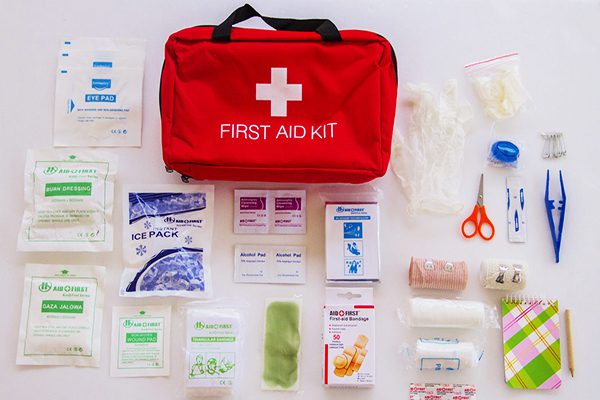
Prepare first aid kit to protect yourself and help your partners in case of injury
Important Rules to Protect Nature When Hiking in Vietnam
- Plan ahead and prepare for your hikes carefully.
- Only go camping on a durable surface.
- Handle waste properly.
- Leave what you find.
- Minimize the impact of campfires.
- Respect for wildlife.
- Take care of other travelers.
Some Notes for Hiking in Vietnam with Kids & Dogs
Hiking in Vietnam with Children
On your Vietnam family tour, sharing the magic and beauty of the outdoors with children is a special experience. Children of almost any age can enjoy hiking, from infants to middle school students.
Our advice:
- Keep children dry, warm and not hungry.
- Take a short walk and stop often to see plants, rocks and animals.
Hiking in Vietnam with Dogs
If you want to go hiking with your puppy, the first step is to find out if they are allowed to go to your destination. For example, most national parks do not allow dogs to be chained on a trail. Many national forests, as well as state and local parks, allow dogs to walk along, despite different rules. Leashes are mandatory almost everywhere.
Our advice:
- Bring your dog with separate food and water in a separate bag
- Stop often to snack and drink water
- Always pack dog bags. Also, while you are hiking, don’t leave a stool bag on the trail and take it back.
Hiking Etiquette for All Travelers
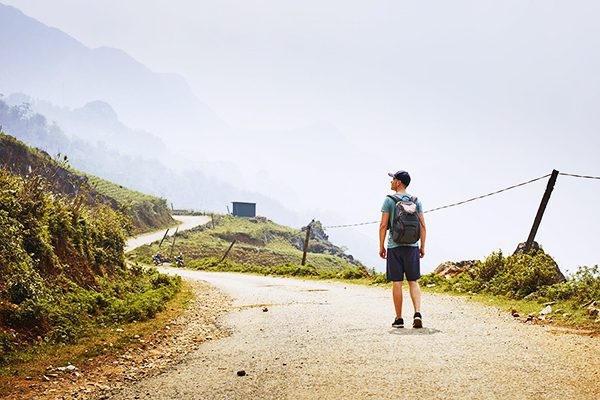
A hiker admiring the scenery on a winding road
- A hiker going uphill has the right of way. If you’re on a flat section, just be courteous and move to the side allowing the hiker(s) to pass.
- Say a simple “hello” when you pass other hikers. On more remote trails, or when hikers are few and far between, a quick chat about what conditions to expect is pretty common. However, if you don’t feel comfortable around another hiker, just keep moving and play it safe.
- If you’re with a friend or group of hikers, keep conversations down.
- Music is okay if you use headphones.
- Keep your dog leashed and under control.
- Stay on the trail. Sometimes you will see shortcuts. Unless they are official trails, stay off of them. Same goes for puddles and mud. The proper thing is to go through puddles (wear hiking boots), and not widen the trail by going around them. This helps protect the fragile habit around the trial.
- Take your trash out with you.
- Yield to bikes and horses. Technically bikers are supposed to yield to hikers, but usually bikes are moving quickly and it’s easy enough to stop and let them pass. When it comes to horses, that one is pretty much common sense, just step to the side and let them pass.
See more: Essential International Travel Etiquette Tips For Every Tourist
Best Trails and Destinations for Hiking in Vietnam
1. Lang Biang Mountain
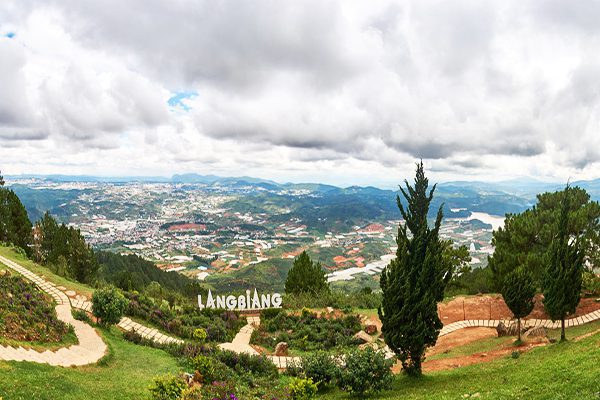
Lang Biang Mountain, an amazing place for hiking
This is one of the highest peaks in Da Lat and is also one of the most famous hiking locations in Vietnam. Here you walk to the top of the mountain but follow the trail, not the asphalt, you will go through the old forest canopy with lots of great trees or bang through small murmuring streams … Other hiking activities such as rock climbing and camping (camping) can be involved. It will be very interesting.
2. Sapa
Sapa is the most attractive hiking destination. Come to Sapa then try once hiking into the village, staying 1 night and visiting the life of the Mong, Dao, and How from Sapa city, you can go a lot of roads, and all roads are beautiful. You should research carefully to choose the route that best suits you. The nearest and shortest day is to Ta Van. If you want to experience longer distances. You will be wandering through the rice fields are fragrant milk fragrant valleys, bamboo forests, rowing passes, mountain passes, wading streams, etc.
3. Ba Be National Park
There are many hiking trails in Ba Be, so it is best to spend a few days exploring here. With Ba Be you will admire the fascinating natural beauty, with many valleys after the rainforest. dense, majestic waterfalls pouring from above or towering limestone mountains.
4. Cat Tien National Park
If you want to go hiking and watch wildlife, come to Cat Tien National Park, there are many rare ancient trees that have existed for thousands of years. In addition, the system of natural waterfalls and rivers gives Nam Cat Tien a soft, gentle beauty typical of the South.
5. Pu Luong Nature Reserve
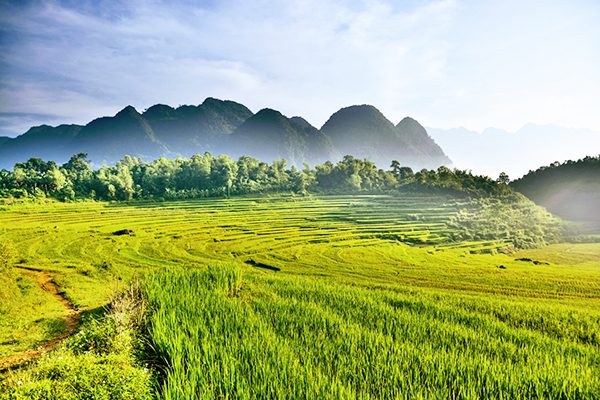
Hiking in Pu Luong to admire majestic terrace rice fields here
Pu Luong is located in Ba Thuoc and Quan Hoa districts, 130 km northwest of Thanh Hoa city. The reserve is located between two mountains, a lush valley of lush forest. And if you are a lover of nature or wild scenery, don’t be shy to come to Pu Luong right away. Pu Luong peak of 1,700m high is a hiking point that many young people love. With 5 hours, you will have extremely interesting experiences with the scenery of immense rice fields and gentle terraced fields on the mountains or lush green primeval forests.
6. Cat Ba National Park
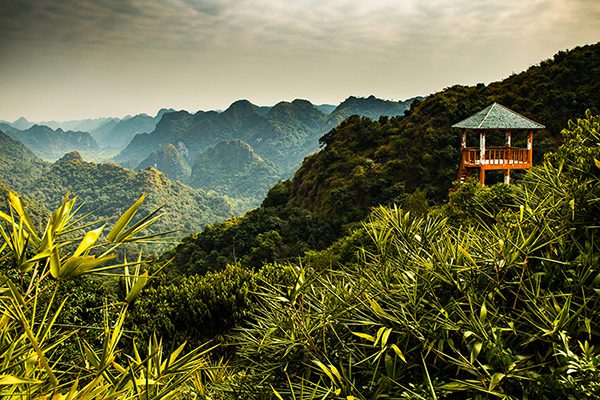
Cat Ba National Park
This site is located on Cat Ba Island, Cat Hai District – Hai Phong City and 60 km from the city center. This is a hiking spot not to be missed by young people passionate about exploring. In Cat Ba National Park, you can start a hiking trip with an 18 km long route to the destination on a mountain. If you are not used to traveling this far, hire a guide. Along the way, you may encounter wildlife such as golden monkeys, civets and deer.
7. Mai Chau
Located in the northwest of Vietnam, 130km from Hanoi capital is a peaceful and beautiful mountainous area. The vast rice fields and small villages in Mai Chau are suitable for those who want to have a relaxing hiking day. The travel service is quite developed here, so you can find restaurants and places to buy and sell essential goods quite easily.
8. Cuc Phuong National Park
It can be said that the biodiversity of Cuc Phuong National Park is hard to beat elsewhere. From Hanoi, you can spend a day hiking here. Cuc Phuong Garden has many routes for you to choose from, depending on your hiking experience. You can follow the path up the mountain so you can look down the valleys. Cuc Phuong Garden also provides documents on the roads and the guide.
9. Cao Bang
As one of the most amazing hiking locations in Vietnam, Cao Bang is famous for its majestic natural mountains, here you will be climbing passes, wading streams, crossing fields and passing through ravines. An unforgettable feeling. The most beautiful route is probably the one going through Ban Gioc waterfall, close to the Chinese border.
10. Ba Na Hill
It is a recreation area made in the style of an ancient village in France. The view of the mountains and the majestic waterfalls is well worth the trip. This hiking route is relatively easy to go, the scenery is very beautiful again.
Start planning your tailor-made Vietnam tour by contacting one of our specialists…





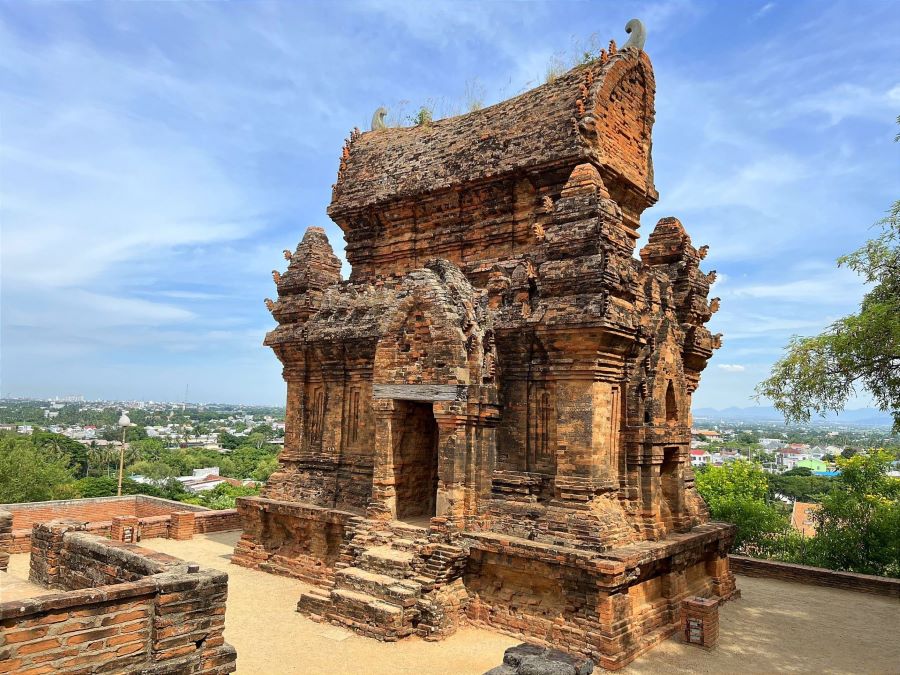


Hiking is my hands-down favorite travel activity. There’s just so much that you can see in Vietnam that’s only accessible by foot, over mountaintops, glaciers, and through canyons and gorges!
Thank you for your comment.
Vietnam is a beautiful country with so many gorgeous scenery and friendly people. Hiking with locals in Vietnam will not only bring tourists closer to picturesque graphics but also offers you a chance to experience a very different kind of travel with unique trails, views and surroundings.
Summer is coming and this is a suitable time for hiking and getting some tans. Book in advance with us with no deposit required <here>!